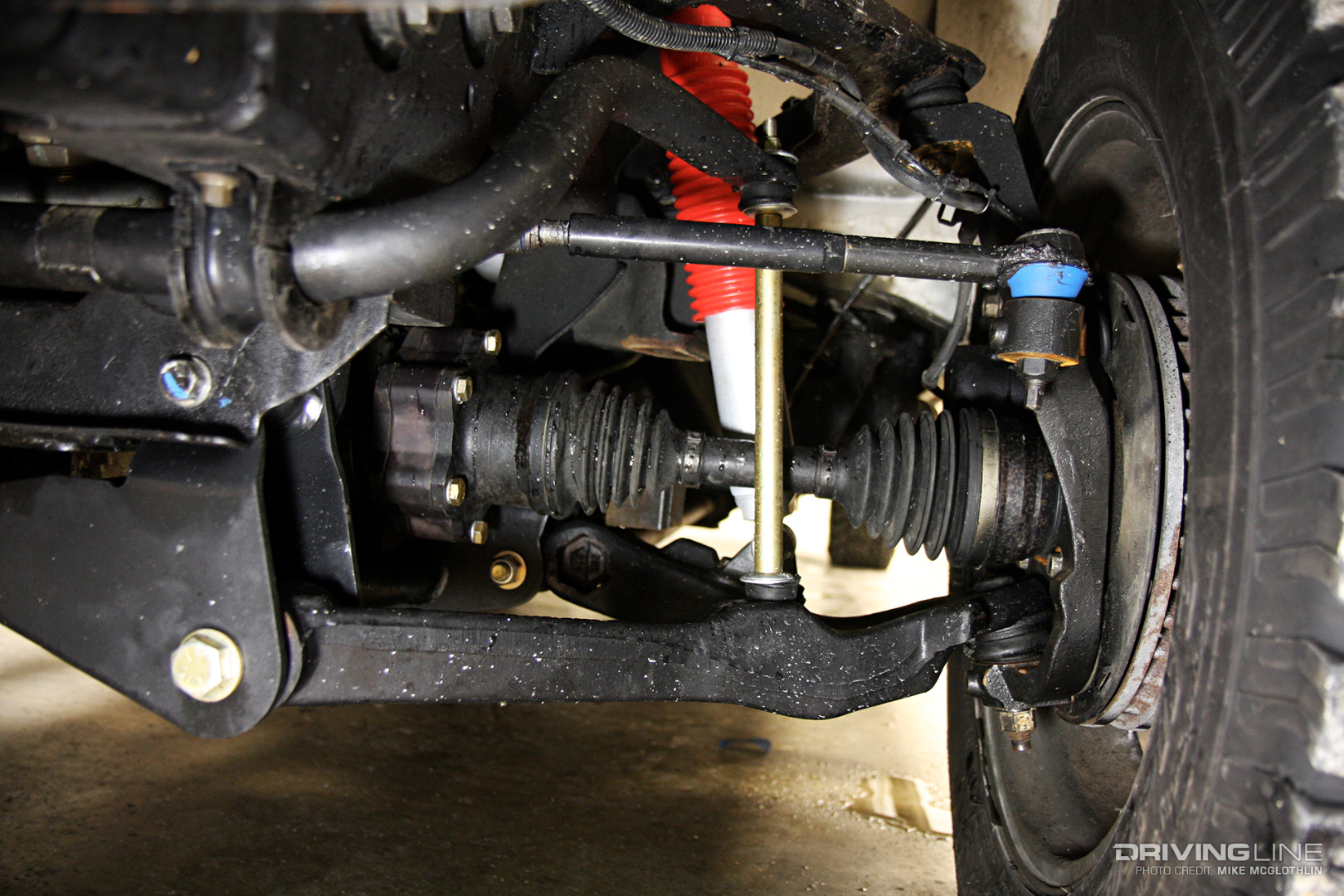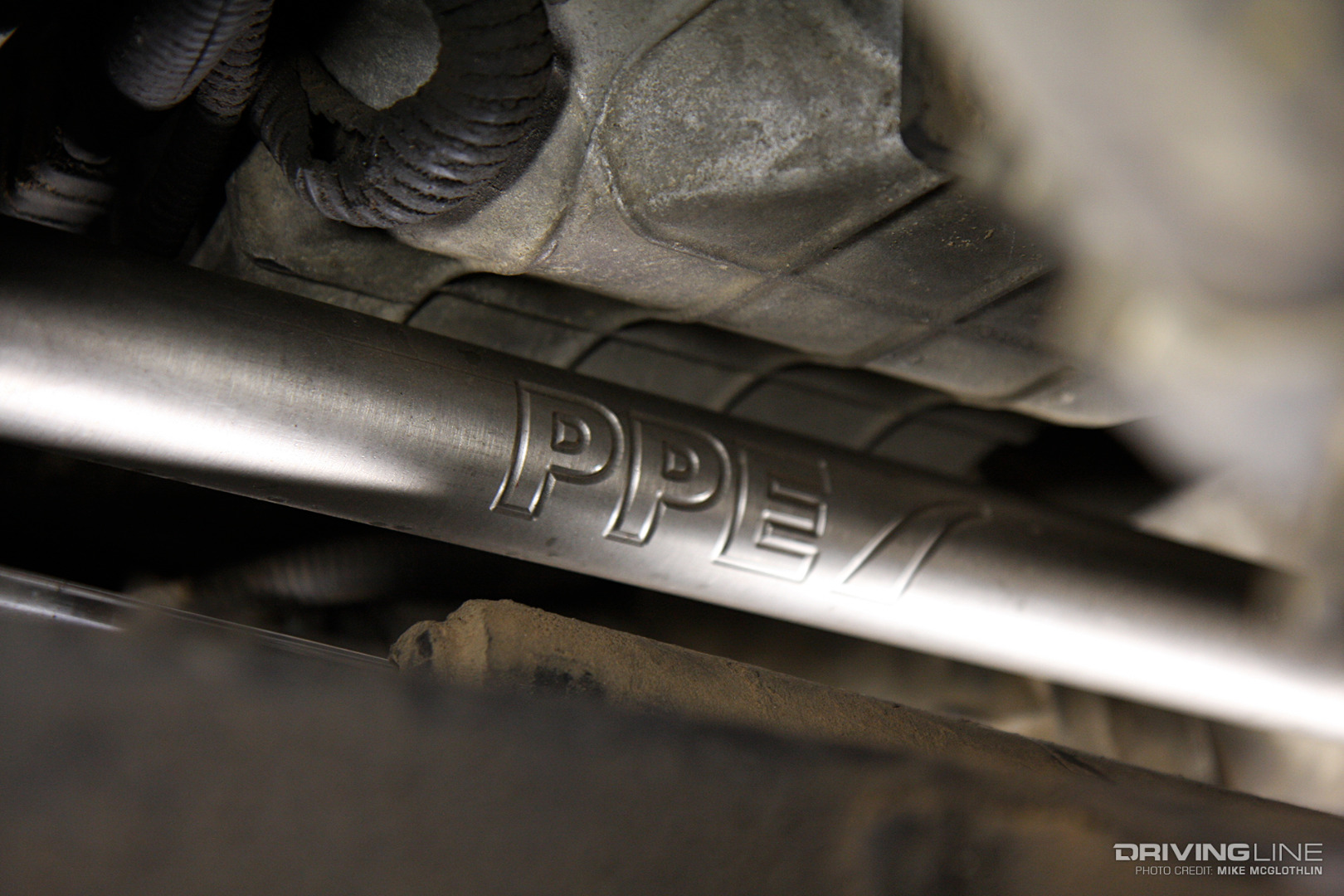Whether you’re prepping for an upcoming truck pull, drag race, off-road excursion or simply looking to be proactive, the AAM 9.25 IFS under the front of your ’01-present heavy-duty GM is in need of some reinforcement. While the independent front suspension works fine at stock horsepower and torque levels, due to the ease of which horsepower can be (and often is) added to the 6.6L Duramax, big problems can quickly surface. Bent tie rods, broken tie rod ends and tweaked pitman and idler arms are par for the course when the OEM steering system is tasked with handling more stress—and competition-level power can even grenade the differential.
Below, we’ve highlighted the key trouble areas within GM’s AAM 9.25 IFS system as well as the best ways go about addressing them. From a simple tie rod sleeve install in your driveway to pulling the entire front end apart to add a locker, these mods range from mild to wild. Depending on how you use your truck, some of them might even be mandatory. Whatever the circumstance, you’ll be able to show the solid axle competition who’s boss with the following upgrades.
1. Tie Rod Sleeves

If you do one thing (and nothing else) to guard your GM’s front end against failure, install tie rod sleeves. On ’01-’10 Chevy and GMC HD’s the inner tie rod measures just 14.2mm in diameter, whereas most aftermarket tie rod sleeves are 25mm or larger. Tie rod sleeves are designed to thread onto the outer portion of the inner tie rod and reinforce the weakest part of the factory tie rod: the threaded area between the steering rack and the outer tie rod. Tie rod sleeves can easily be installed in less than 30 minutes and will only run you $80 to $100.
2. When Failure Is Not an Option

Complete, aftermarket tie rod assemblies exist for those of you looking for both a fresh start and superior strength. In particular, Pacific Performance Engineering (PPE) offers Stage 1, 2 and 3 tie rod assemblies. Its Stage 1 kit is geared toward the truck owner with worn out ball joints and includes a set of brand new GM tie rods fitted with the company’s 304 stainless steel tie rod sleeves. The Stage 2 assemblies feature 40-percent larger tie rod bodies, 48-percent larger toe adjustment shafts, 14-percent larger outer ball joints and 28-percent larger inner ball joints. PPE’s Stage 3 system comes with 1.5-inch wide, forged-steel tie rods (53 percent bigger than stock), massive 2-1/3-inch ball joints and each outer tie rod end contains a spring-loaded gusher bearing that maintains constant pressure.
3. Pitman & Idler Arm Reinforcement

Once you’ve addressed your tie rods, the next area in need of some extra strength is the factory pitman and idler arms. The pitman arm connects to the output shaft of the steering gear box, which is linked to the steering centerlink, while the idler arm sits on the opposite end of the centerlink and controls steering motion. Under heavy load and/or added power in four-wheel drive, the factory centerlink rotates, causing a potentially damaging toe-in scenario at the wheels. A pitman and idler arm support kit keeps this from happening.
4. Keep It on the Straight-and-Narrow

Any time you force the CV shafts, ball joints or steering links in GM’s independent front suspension to work at odd angles, you’re asking for trouble. The less angle all of these components see, the stronger this front end is. As a general rule of thumb, you want to make sure the CV shafts are in parallel with the tie rods, especially when the truck is under full power.
5. Torsion Bar Keys

It’s no secret that cranking up the factory torsion bars is the cheapest way to clear larger tires, but don’t do it. While the added ride height will allow you to run slightly larger tread, you’re upsetting the factory ride height that allows the CV shafts and steering links to function at their optimum angle(s). Cranking up the torsion bars will also yield harsher ride quality and increased ball joint wear.
6. Adjustable Keys

Not to sound like a broken record, but (once again) it’s vitally important that your truck’s suspension height be tuned so that the steering and CV shaft angles are working in their optimum position—and the MAXXCam 2 torsion bar keys from Suspension Maxx allow you to do just that. Thanks to being a 7-way adjustable key, they’re a great way to achieve the perfect ride height, whether your truck has been moderately lifted, leveled or lowered.
7. Straight Centerlink

If straight line performance and making big horsepower are your primary goals, a straight centerlink may be in order. By replacing the flexible factory centerlink with a solid, straight piece, tremendous strength is added, along with improved input from the steering wheel to the tires. Aftermarket straight centerlinks are often made from stainless or chromoly steel, are larger in diameter and rated for 110,000 psi tensile strength (or more). The trade-off of running a straight centerlink comes in the form of a slight loss in turning radius.
8. Centerlink Steering Stabilizer

For the owner who doesn’t want to sacrifice his truck’s turning radius but needs some type of support for the factory centerlink, Dirty Hooker Diesel offers a centerlink steering stabilizer bracket. Using a mounting bracket that ties the stabilizer in with the front differential, the centerlink support keeps the factory centerlink from rotating and the steering system perfectly true.
9. ARB Air Locker

Your GM’s independent front suspension already provides (arguably) better traction than its straight axle counterparts, so why not make sure both wheels are always digging with a locking differential? For a user-friendly locker that won’t sacrifice street manners, ARB’s Air Locker is hard to beat. Engaged via air (which necessitates a separate, onboard, 12-volt compressor), the ARB unit allows you to go from open diff to completely locked at the touch of a button.
10. Center Axle Disconnect Sliding Collar

If you get too carried away with adding power and hooking to the sled, your center axle disconnect (CAD) in the front differential could end up looking like this. Under extreme load, the sliding collar is subjected to immense force, which causes it to twist, bind, and almost always fail in catastrophic fashion. The cost to fix the center axle disconnect can be pricey, which prompts many enthusiasts to replace the problematic, two-piece passenger side axle shaft altogether with a one-piece axle shaft. Just know that if you go this route, the front differential and drive shaft will permanently spin, which sometimes leads to vibration.
11. Billet Sliding Collar

Another solution to the weak OEM sliding collar—and one that won’t force you to do away with the factory center axle disconnect—is the billet front differential slider from Dirty Hooker Diesel. The company’s billet-steel slider is a direct replacement for the factory, powdered metal collar and—in addition to holding up to the rigors of truck pulling—is designed to last as long as the OEM piece.